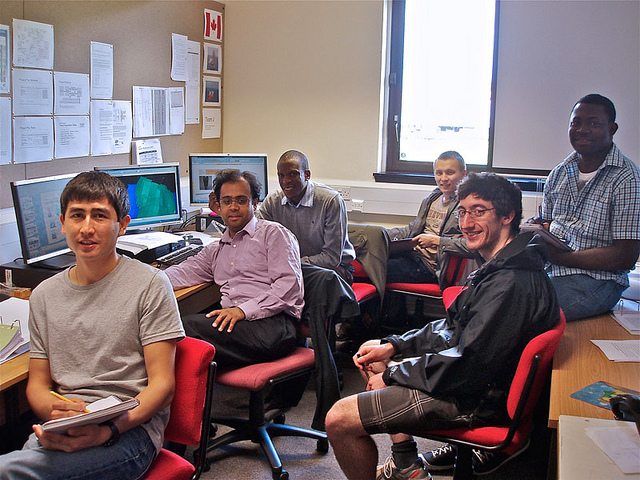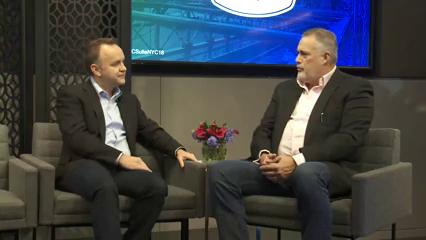
The Professional Skills Gap Narrows
The Professional Skills Gap Narrows https://csuiteold.c-suitenetwork.com/wp-content/uploads/2015/05/7440445608_704305b15a_z.jpg 640 480 C-Suite Network https://csuiteold.c-suitenetwork.com/wp-content/uploads/2015/05/7440445608_704305b15a_z.jpgby Warren Barkley
2015 is shaping up to be a year of accelerated change in the ways we learn, communicate and collaborate; driven by necessity, changing demographics and new ways to use old technology. As a follow up to my earlier post on Millennials and their influence on the face of corporate IT, I’ll now lay out another emerging, major trend that dovetails with the first, and that will affect us all. This post and my next will look at the “Skills Gap,” and then at something we’ve dubbed “Device-olation.”
The professional thorn in our nation’s side — the fact that many grads enter the workforce without the real-world experience needed to succeed in business — will see a marked improvement as educators incorporate classroom technology and practices that help teach the soft skills needed for workforce preparedness.
In today’s connected world, all our information is readily available through our laptops, PCs, tablets and smartphones. At work, we spend hours in meetings or small groups coming up with better ways of doing things, learning from others and, ultimately, innovating. But when you look at schools today — at least most schools — we’re still educating our children based on a 200-year-old pedagogical system. We walk out of school with a degree in our hand, and yet we have done little to develop the skills that are most important in today’s workplace.
Why is that? In 2010, Dr. Sugata Mitra presented his findings on student-driven learning in a TED talk, and the results are astounding. Children learn much better when they are allowed to explore, share and collaborate than when they are sitting classroom-style and being lectured to. He shared this research four years ago, and yet many students are still being taught the “old-fashioned” way.
The good news is a number of organizations and schools are thinking outside the box, and we’re seeing student-driven and project-based learning gain momentum throughout North America and Europe. I’m fortunate to be personally involved with a number of these organizations, including TAF, which offers a program to address barriers to students of color in STEM fields.
TAF benefits not only the students in the program by teaching them real-world skills like needs identification, coding, and field research – it also benefits those whose lives are enriched by these students’ work. For example, Special Ed students in a nearby Tacoma school use software applications developed by TAF students. The stories are heartwarming — you can see the difference these software applications make in these students’ lives. You can watch a video about one of these students here.
In other schools, like Preston Middle School in Colorado, San Elijo Middle School in California, and Bishop Kearney High School in New York, we’re seeing great traction with collaborative classrooms that are designed with project-based, highly collaborative learning in mind. And it’s working. Kids are some of the biggest advocates of this approach.
Fortunately, there are many thought leaders who agree that this skills gap needs to be addressed, and they’re sharing their vision with others. We recently spoke to Innovative Educator blogger Lisa Nielsen about collaboration. She shared some great insights on how kids not only want to change the world; they are changing the world. And they can only do so when they have access to the tools we use in everyday life, and she also has the real-world examples that prove her theory.
I’m encouraged by the examples mentioned above (and countless other programs in place) that we’re moving the in the right direction. As a former teacher and as the CTO of a leading ed-tech company, I welcome this trend, and I look forward to the positive effects it will have on our children and in the business world as well.
But we’re not there yet. Dan Schawbel states that 50 percent of Generation Z learners are participating in internships before they graduate from high school — it’s not in others. Higher education needs to more fully embrace co-ops for Millennials and the generation on its heels as indicated in this Fortune article.
The good news is that the conversation is happening, and I think we’ll continue to see the skills gap narrow.
 Warren Barkley is the CTO of SMART Technologies with more than 17 years of technology experience and leadership, most recently serving as General Manager in the Microsoft Lync/Skype division. Barkley held several key positions in Microsoft over his tenure and was instrumental in the development of Microsoft Lync as the communication and collaboration software of choice for Fortune 500 companies. At Microsoft he played a central role in establishing WiFi as a worldwide standard, and building world class real time communications technologies used by hundreds of millions of users every day. Barkley holds over 35 worldwide patents in networking, wireless and communications.
Warren Barkley is the CTO of SMART Technologies with more than 17 years of technology experience and leadership, most recently serving as General Manager in the Microsoft Lync/Skype division. Barkley held several key positions in Microsoft over his tenure and was instrumental in the development of Microsoft Lync as the communication and collaboration software of choice for Fortune 500 companies. At Microsoft he played a central role in establishing WiFi as a worldwide standard, and building world class real time communications technologies used by hundreds of millions of users every day. Barkley holds over 35 worldwide patents in networking, wireless and communications.




